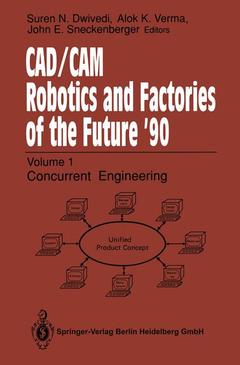According to the Concurrent Engineering Research Center (CERC) at West Virginia University, "the concurrent engineering (CE) is a rapid simultaneous approach where research and development, design, manufacturing and support are carried out in parallel". The mission of concurrent engineering is to reduce time to market, improve total quality and lower cost for products or systems developed and supported by large organizations. The purpose of the concurrent design methodology is to let the designer know the consequences of his design decisions in the manufacturing and assembly stages as well as in subsequent operations. Design for manufacture and assembly, design for reliability and testability, CAD/CAM/CAE, knowledge based systems, cost analysis and advanced material technology are the maj or constituents of concurrent engineering. The need for concurrent engineering can be justified from the fact that in every production cycle, the design phase approximately takes 5 to 10% of the total cycle, but overall it influences 80% of the production cycle. This volume contains articles from a wide spectrum dealing with concepts of concurrent engineering. The importance of the knowledge-based systems in the CE environment is significant as they provide the common platform to achieve the same level of expertise to the designers and manufacturers throughout the organization for the specific task. Their role in "do it right the first time" is very important in providing aid to the designers and manufacturers to optimize the design and manufacturing setups for a cost effectiveness and reduced production time.




